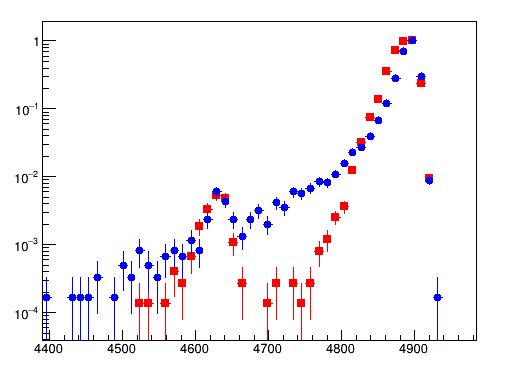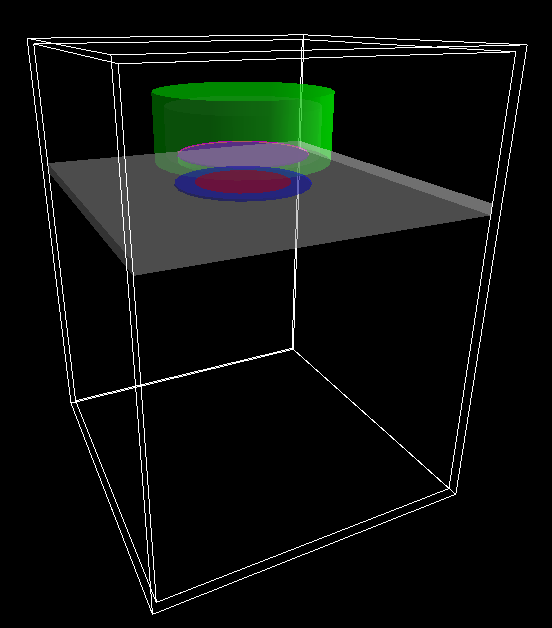I am trying to simulate the response of an alpha PIPS detector.
The energy and shape of the peak are in agreement with the data but I cannot reproduce the low energy tails of the peaks (see the spectrum of 210Po attached). I have changed the thickness of the passivated layer and of the depletion depth of the silicon detector but the results are still quite the same.
Any suggestion/idea?
Many thanks
_Geant4 Version: 11.1.1
_Operating System: Ubuntu 22.04 LTS
_Compiler/Version: gcc 11.4.0
_CMake Version: 3.22.1

It is difficult to give detailed suggestions without knowing the details of your setup so maybe it would be useful to add a bit more information.
You could check the impact angle of your beam/decay on the detector. Alternatively, might there be additional material between your source and detector which results in energy losses?
Thanks for the reply! Here are some details of my setup (see the attached image):
- the detector is a passivated implanted planar silicon detector (diameter 23.9 mm, 300 um thickness)
- the thickness of the passivated layer and the depletion region are 50 nm and 150 um respectively
- the source is described as a 25 mm 400 um thick silver disk with a thin surface layer (19 mm diameter, few nm thick) of 209Po
-the source is positioned on a stainless steel plate and the distance between the source and the detector surface is 5 mm
- the chamber is filled with low pressure and density standard air to simulate vacuum
As far as I am understanding the thickness of the source layer has a significant influence on the low energy tails (see the attached plot)… i am trying to simulate a non uniform source and see if i can obtain a better agreement with data.

Hi,
From an experimental point of view, I think it is better to collimate the source if possible.
Out of curiosity, which physics lists are being used for the simulation?
Maybe it would be worth to try with EM physics option 4, and PAI model (instead of Urban model which is the default).
The class G4PAIPhotonModel generates both δ-electrons and photons as secondaries and can be used for more detailed descriptions of ionisation space distribution around the particle trajectory.
Please, let us know if those features improve the agreement of MC with the experimental data 
Best,
Alvaro


